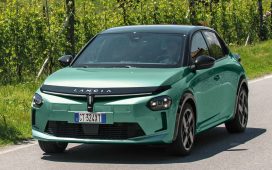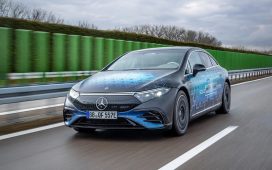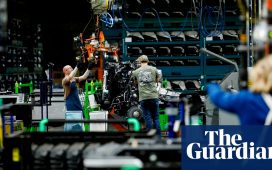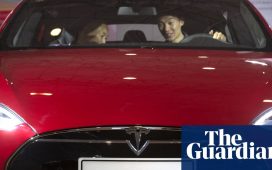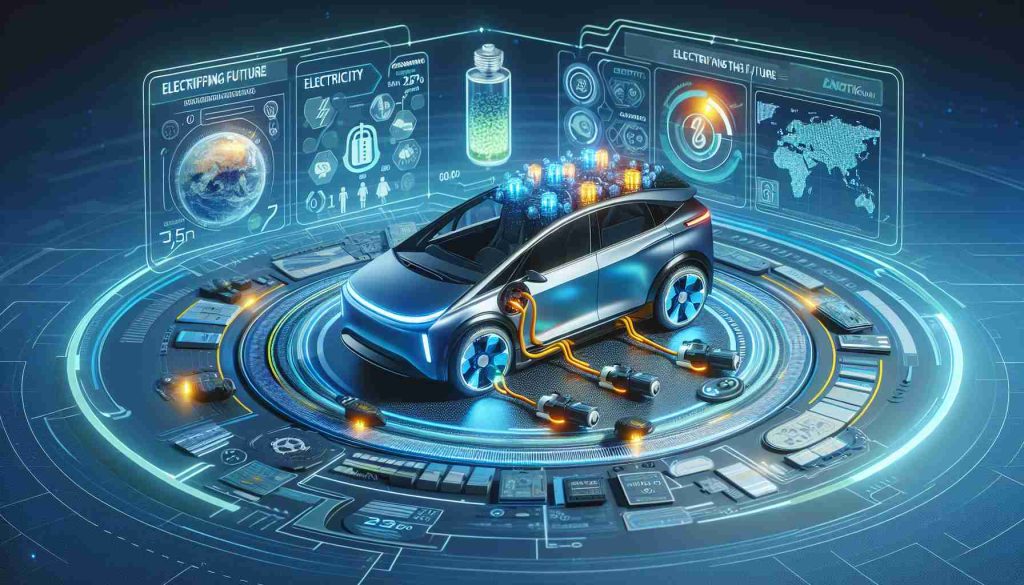
Summary: The electric vehicle (EV) market is undergoing a revolutionary change with the introduction of Sodium Ion Batteries (SIBs), which could significantly lower the cost of EVs. This battery technology eliminates the need for expensive materials like lithium and cobalt, thereby reducing battery costs by about 30%. As a result, environmentally conscious consumers might anticipate a range of more affordable electric vehicles soon.
The automotive realm is poised for an evolutionary leap as Sodium Ion Batteries (SIBs) start to challenge the longstanding dominance of lithium-ion batteries in electric vehicles. It’s a development that holds the promise of slashing battery costs immeasurably, since the reliance on pricey materials such as lithium and cobalt falls away. This technological shift points to an era of electric cars that come with a gentler sticker shock—batteries represent a hefty 40% of an EV’s price tag after all.
On the forefront of this innovation, Chinese carmaker JAC has taken the lead by rolling out an electric vehicle under its Yiwei brand, featuring a SIB by Hina Battery. JMEV isn’t far behind, with its new EV featuring SIB technology sourced from Farasis Energy. These batteries not only relieve the wallet but also shine brightly in colder climates and boast a strong safety profile.
As the technology advances, industry stalwarts, including CATL in China, Northvolt in Sweden, and Faradion in the UK, are intensifying their development efforts. With goals set to push energy density to a compelling 160-180Wh/kg, SIBs could soon go mainstream in EV production.
For the latest in-depth coverage on battery innovation and EV progression, industry leaders CATL, Northvolt, and Faradion offer rich online resources.
Diverse solutions are on the drawing board, as Renault ponders hydrogen’s role alongside EVs, and Bentley plans a surge into the electric market with an all-electric model by 2025 followed by several others. Such initiatives carve out new aesthetics specific to EVs including distinctive lighting.
Still, the rise of SIBs isn’t without hurdles. From ramping up production and enhancing energy density to ensuring sustainable sodium sourcing and building supportive infrastructures—the industry faces notable challenges. Overcoming these while paying close attention to environmental impacts will be critical to the broader uptake of SIB technology in transportation.
The entry of SIBs into the electric vehicle sector spells a transformative phase for greener, more cost-effective transport options, foreshadowing the continued evolution and potential triumph of SIBs in the face of industry challenges.
The Electric Vehicle (EV) Industry and Market Forecasts
The automotive industry is on the precipice of a significant transformation as it embraces electric vehicles (EVs) with the burgeoning development of Sodium Ion Batteries (SIBs). This shift is expected to address a critical impediment to EV adoption: the high cost of production, particularly associated with battery technology. By reducing the dependency on costly metals such as lithium and cobalt, SIBs have the potential to bring down the cost of batteries by approximately 30%. Consequently, this could lead to a broader consumer base for EVs as affordability improves.
Market forecasts for EVs continue to project rapid growth, especially as governments around the world institute policies aimed at reducing carbon emissions and encouraging the development and purchase of electric vehicles. According to industry analysts, the global EV market could experience a compounded annual growth rate (CAGR) that places the market size value at several hundred billion dollars by the end of the decade.
Issues and Challenges
While Sodium Ion Batteries present a promising avenue, there are numerous challenges that the industry must surmount. To transition from lithium-ion to SIBs at scale, manufacturers face significant logistical hurdles in revamping production lines and supply chains. Additionally, there’s the challenge of matching the energy density of lithium-ion batteries, which currently power the majority of EVs on the market.
Another concern is the responsible sourcing of sodium. Despite its abundant availability compared to lithium, ensuring that sodium extraction does not lead to environmental degradation or socio-economic exploitation will be critical for maintaining the sustainable ethos of the EV revolution.
Infrastructure development remains a crucial factor for EV uptake, including the enhanced need for charging stations that can accommodate a growing fleet of electric vehicles, as well as upgrades to electrical grids to manage increased demand.
Market Response and Industry Adaptation
Innovation in the EV sector is not limited to just battery technology. Companies are exploring various ways to make EVs more attractive to consumers, from designing vehicles with unique aesthetics that differentiate them from traditional cars to integrating advanced features such as autonomous driving and connectivity.
For instance, the introduction of vehicles by JAC and JMEV featuring SIB technology not only highlights cost-saving measures but also offers performance benefits in colder climates and a superior safety profile. As industry giants like CATL, Northvolt, and Faradion continue to invest in research and development, the goal of achieving energy densities that make SIBs competitive with existing battery technologies seems well within reach.
The global push for a greener automotive sector has led to manufacturers exploring alternatives and complements to battery-electric vehicles as well, such as hydrogen fuel cells. Renault’s consideration of hydrogen technology alongside its EV strategy is a testament to the industry’s search for diverse solutions.
A Look Ahead
Looking forward, the transition to a cleaner and more sustainable mode of transportation will require concerted efforts from policymakers, industry stakeholders, and consumers. Although the road ahead presents challenges, the potential environmental benefits and cost reductions offered by SIBs could be instrumental in accelerating the growth of the EV market, ushering in a new era of transportation geared towards sustainability.

Leokadia Głogulska is an emerging figure in the field of environmental technology, known for her groundbreaking work in developing sustainable urban infrastructure solutions. Her research focuses on integrating green technologies in urban planning, aiming to reduce environmental impact while enhancing livability in cities. Głogulska’s innovative approaches to renewable energy usage, waste management, and eco-friendly transportation systems have garnered attention for their practicality and effectiveness. Her contributions are increasingly influential in shaping policies and practices towards more sustainable and resilient urban environments.

